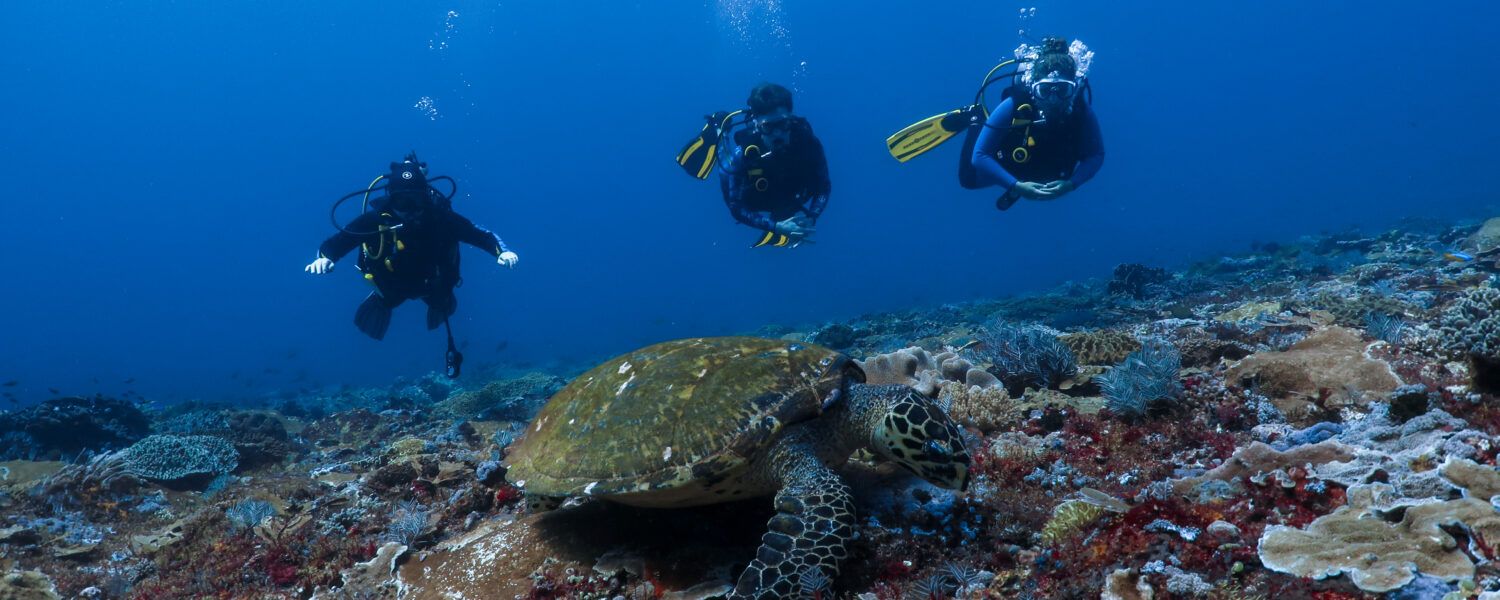
From Head to Scute: Identifying the Seven Species of Sea Turtles
By: Savannah Kerns, Broadreach Program Director January 22, 2025 Marine Biology
Whether you first learned about sea turtles from Finding Nemo or were lucky enough to see one in the wild, their incredible nature leaves a lasting impression. Our oceans are home to not one but seven unique species of sea turtles, each with distinct characteristics and vital roles in their ecosystems.
To dive into the unique features of these species, start by observing the photo of their shells (called the carapace) and note any differences. We’ll revisit this later!
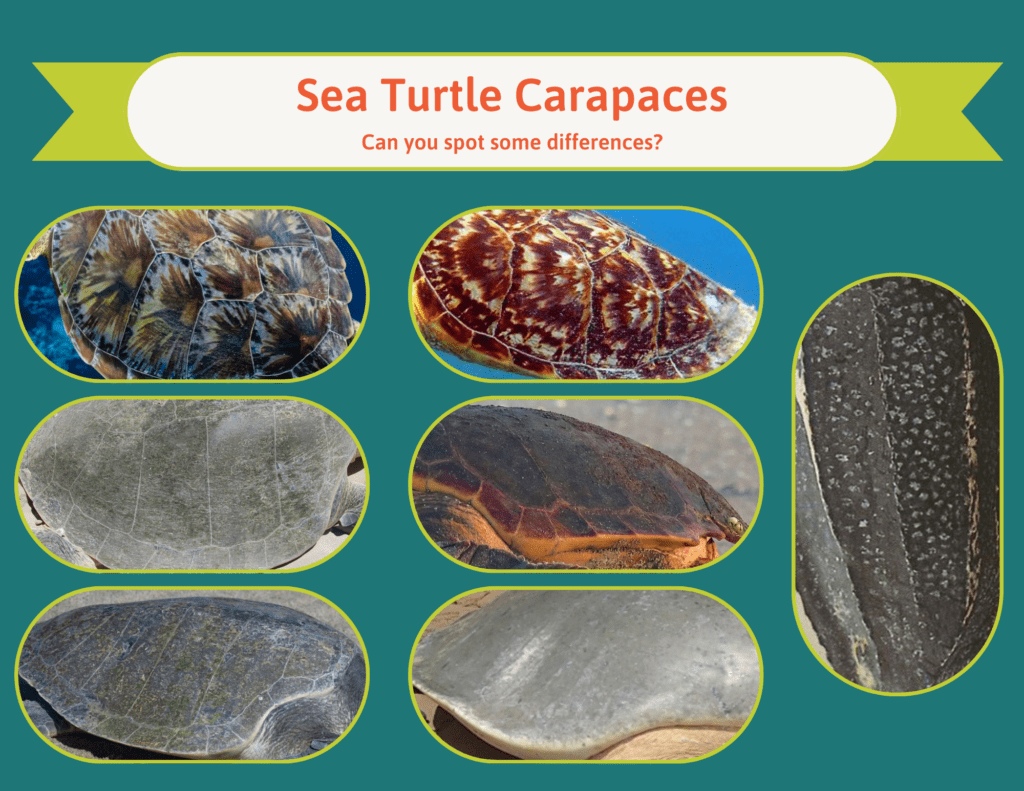
What Makes a Sea Turtle Unique?
Sea turtles’ carapaces are covered in hard, bony plates or scales called scutes. There are four types of scutes, but the most useful for identifying species are the costal scutes (on the sides) and the nuchal scute (near the neck). Additionally, the carapace shape can vary widely—it might be round, oval, heart-shaped, flat, smooth, or ridged.
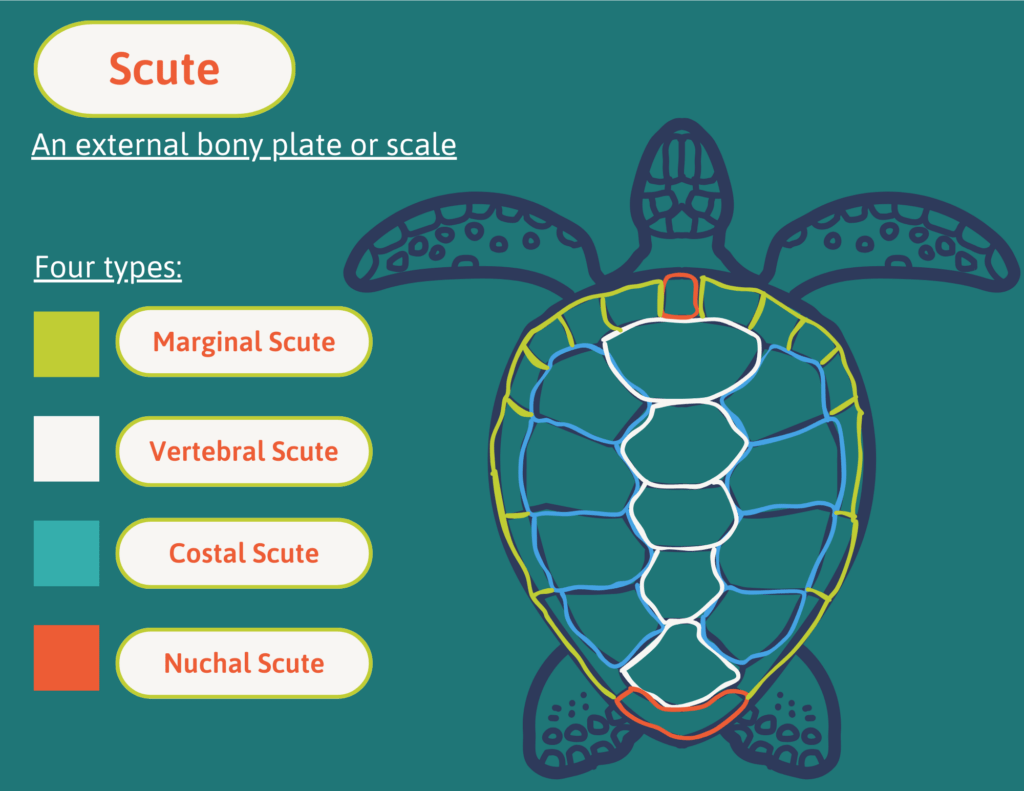
Beyond the carapace, you can also distinguish a sea turtle by observing the shape of its head, which reflects their diet and adaptations to their environment. Finally, size is another key factor. To make this easier, we’ll look at the seven species from largest to smallest.
Leatherback Turtle (Dermochelys coriacea)
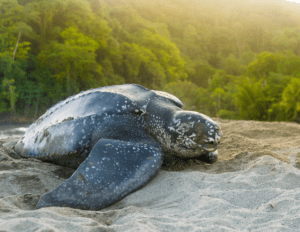
The leatherback turtle is the largest sea turtle species, growing up to 6.2 feet in length and weighing as much as 2,000 pounds. Imagine a full-sized grand piano swimming next to you! Unlike other sea turtles with hard shells, leatherbacks have a dark, leathery carapace with distinctive longitudinal ridges.
Leatherbacks are incredible divers, often plunging deeper than 1,000 meters (3,281 feet) to hunt for jellyfish, their primary food source. Their flexible shells allow them to withstand the extreme pressures of deep dives. These turtles inhabit open oceans, ranging from Alaska to the southern tip of Africa.
Green Sea Turtle (Chelonia mydas)
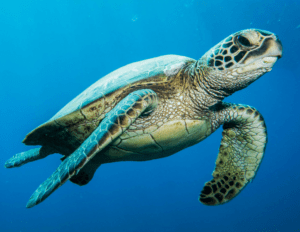
Green sea turtles are the second-largest species, reaching up to 5 feet in length and weighing up to 700 pounds. They get their name from the green-colored fat beneath their shell, which develops from their primarily vegetarian diet of algae and seagrass.
With their small, blunt heads and serrated jaws, green sea turtles are excellent grazers. Their oval-shaped carapace varies in green and yellow hues, with a distinctive radiating tie-dye pattern. They have four costal scutes on each side of the carapace and are commonly found in bays and protected shores throughout temperate and tropical waters.
Loggerhead Turtle (Caretta caretta)
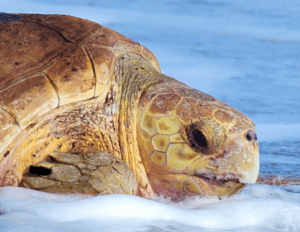
Loggerheads get their names from their large heads, which house strong jaw muscles used to crush shellfish. These turtles are primarily carnivorous, feeding on clams, mussels, and horseshoe crabs.
Weighing up to 350 pounds and growing to 4 feet in length, loggerheads have heart-shaped carapaces with five pairs of costal scutes. The carapace is reddish-brown. They are among the most abundant sea turtles, often found in shallow waters, bays, and estuaries in the Atlantic, Pacific, and Indian Oceans.
Flatback Turtle (Natator depressus)
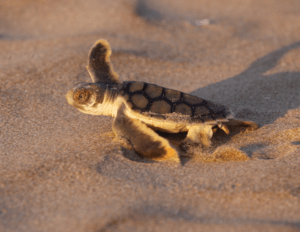
Flatback turtles are named for their flat, olive-gray carapace, which is smooth and upturned at the edges. Their thin shells feature four pairs of costal scutes. These turtles grow up to 3.3 feet in length and weigh around 198 pounds.
Flatbacks primarily feed on sea cucumbers, mollusks, and jellyfish. They are native to the waters around Australia and Papua New Guinea, and less is known about them due to their later identification as a distinct species in 1988.
Hawksbill Turtle (Eretmochelys imbricata)
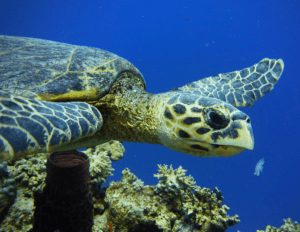
Hawksbill turtles are the most tropical sea turtle species, inhabiting coral reefs in the Atlantic, Pacific, and Indian Oceans. They are named for their narrow heads and beak-like jaws, which they use to forage for sponges, anemones, and squid in reef crevices.
Hawksbills grow up to 3 feet in length and weigh about 150 pounds. Their oval-shaped carapaces feature overlapping scutes with beautiful amber coloring and streaked or marbled patterns. They have four pairs of scutes.
Olive Ridley Turtle (Lepidochelys olivacea)
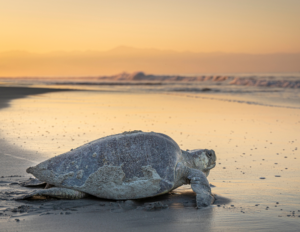
Olive Ridley turtles are known for their olive-green, relatively flat, heart-shaped carapaces with six or more pairs of costal scutes. They grow up to 2.5 feet in length and weigh around 100 pounds.
This omnivorous species has a diverse diet, including algae, crabs, shrimp, and fish. They are highly migratory, often traveling thousands of kilometers between coastal bays and offshore waters in the South Atlantic, Pacific, and Indian Oceans.
Kemp’s Ridley Turtle (Lepidochelys kempii)
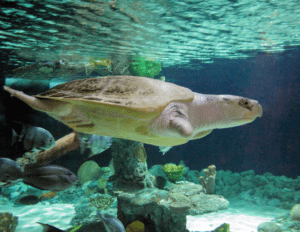
Kemp’s Ridley turtles are the smallest sea turtles, weighing around 100 pounds and reaching 2 feet in length. Their grayish-green carapaces are almost circular, with five pairs of costal scutes.
These turtles prefer shallow waters with sandy or muddy bottoms, where they feed on crabs, mussels, fish, and sea urchins. Adult Kemp’s Ridley turtles are primarily found in the Gulf of Mexico, while juveniles often inhabit the northwest Atlantic and the eastern coast of the United States.
Now that we know some characteristics of the seven sea turtle species, look at this picture again (key at the end of the article)!

Keep in mind these hints:
- Leatherback Turtle = dark, leathery carapace with ridges
- Green Sea Turtle = green/yellow hues, with tie-dye pattern, non-over lapping scutes
- Loggerhead Turtle = reddish brown, non-overlapping scutes
- Flatback Turtle = smooth, flat, olive-gray carapace
- Hawksbill Turtle = amber overlapping scutes with streaked or marbled patterns
- Olive Ridley Turtle = olive green, flat carapace with six or more pairs of scutes
- Kemp’s Ridley Turtle = light-colored carapace with five pairs of coastal scutes
Why care about sea turtles?
As our oceans change rapidly, cities build, and our need for food resources increases, sea turtles’ habitats are increasingly being destroyed. Taking away a species’ home, food source, and maneuverability leads to its becoming endangered and eventually extinct. All the species of sea turtles we talked about in this article currently face the threat of becoming endangered or are already critically endangered.
Why should we care? Besides their intrinsic value to the world, sea turtles benefit their ecosystems and us in many, many ways. Many sea turtle species are keystone species, a species that has an essential function in its ecosystem. If a keystone species goes extinct, its ecosystem—our ecosystem—could collapse.
Green sea turtles are herbivores. They keep seagrass and algae populations healthy and thriving by grazing. This makes seagrass beds more productive, which benefits many other species and stores more carbon.
Sponges can overpopulate and smother coral reefs. When hawksbill turtles munch on them, corals and fish can thrive and access the reef.
Leatherback sea turtles eat up to 440 lbs of jellyfish daily, preventing jellyfish populations from growing too large. A jellyfish population growing too big can upset the ecosystem and pose a more significant threat to humans.
Sea turtles you can see on Broadreach trips:
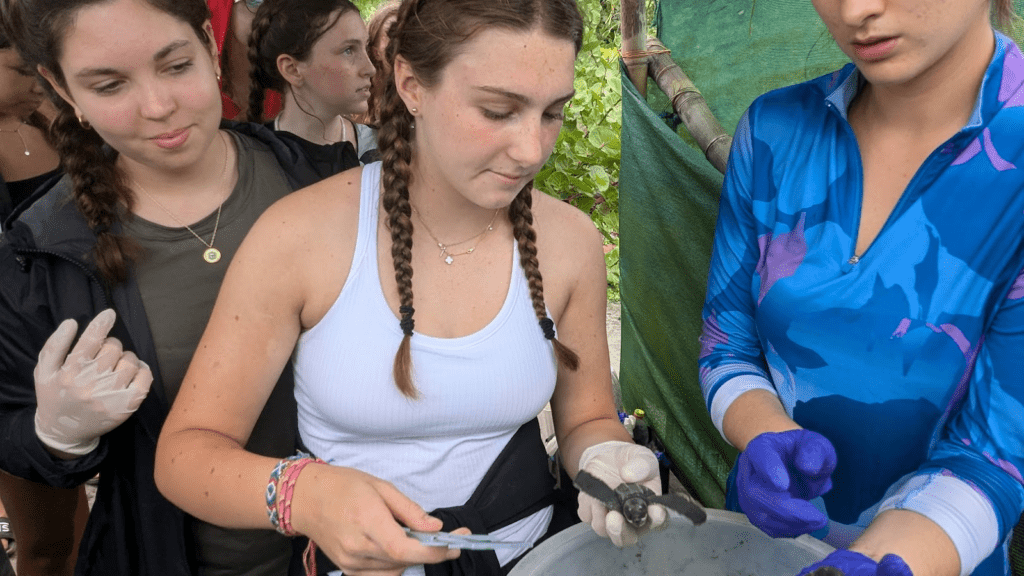
If pura vida is calling your name, you can learn about sea turtle conservation while working with leatherback sea turtles on our Costa Rica Sea Turtle + Marine Conservation program!
If you’re looking to scuba while having the chance to do citizen science research, join our group on the Yucatan Ocean Conservation program to spot Hawksbills nesting on the beach. You could also dive a bit farther south and help locals identify medical issues in Hawksbills on our Curaçao Marine Biology Adventure.
If you’re heading to Nassau for our Bahamas Veterinary + Wildlife Care/Bahamas Island Wildlife Explorer program or St. Martin for one of our Caribbean liveaboard voyages, there is a good chance you’ll see a green sea turtle during a snorkel or scuba adventure.
Sea turtles are more than fascinating marine creatures—they are vital to the health and stability of our oceans. By understanding and appreciating their unique characteristics and ecological contributions, we can take steps to protect them. Stay tuned for an upcoming article that goes into depth on sea turtle threats and how we can help.
Quiz Key
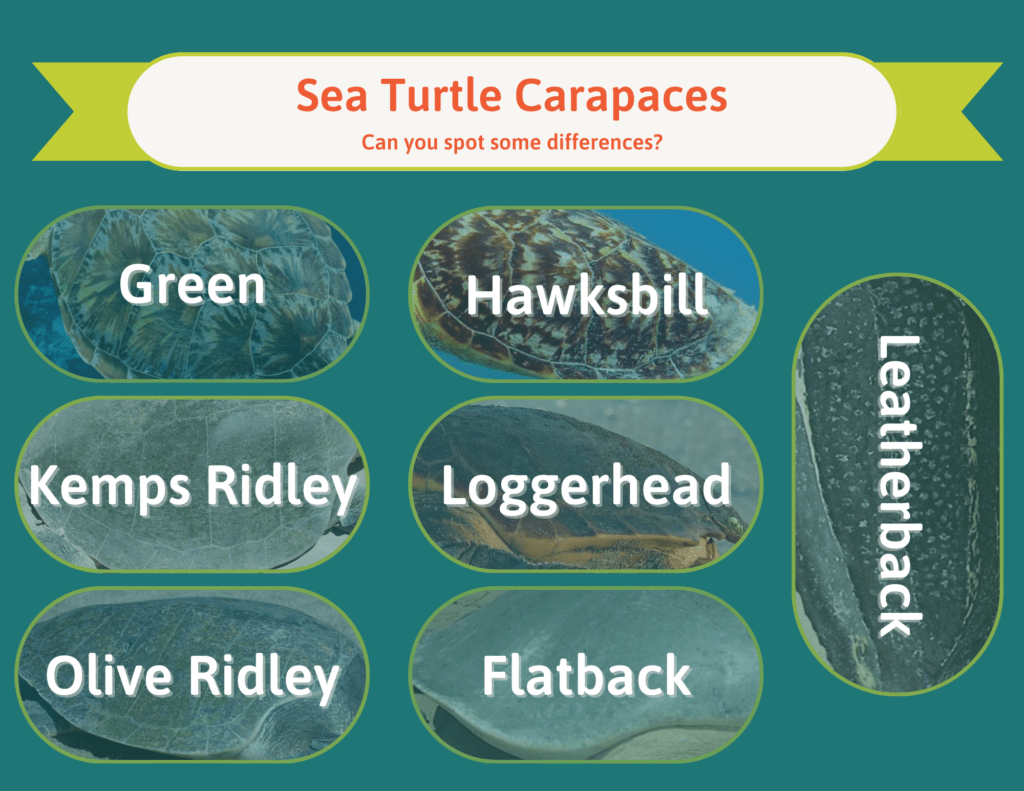
References:
https://www.fisheries.noaa.gov/
